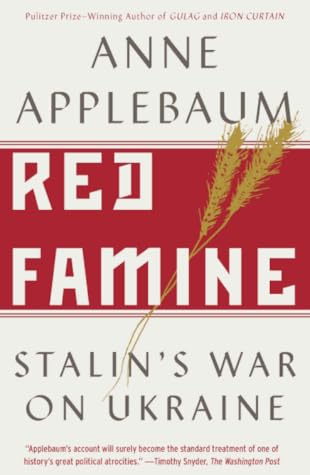More on this book
Community
Kindle Notes & Highlights
Hitler’s Soviet victims also included more than 2 million Soviet prisoners of war, most of whom died of disease or starvation, many of them on Ukrainian territory.
Nazi soldiers and police robbed, beat and arbitrarily murdered other Ukrainians, especially public officials. Slavs, in the Nazi hierarchy, were subhuman untermenschen, perhaps one level above the Jews but slated for eventual elimination.
Nazi troops sent more than 2 million Ukrainians to do forced labour in Germany.
Like every occupying power in Ukraine, the Nazis ultimately had only one real interest: grain. Hitler had long claimed that “the occupation of Ukraine would liberate us from every economic worry,” and that Ukrainian territory would ensure “no one is able to starve us again, like in the last war.”
It was in this context—in hardship and chaos, under brutal occupation, and with a new famine looming—that it became possible, for the first time, to speak openly about the 1933 famine in Ukraine.
During the occupation the purpose of the discussion was not to help survivors mourn, recover, create an honest record or learn lessons for the future.
The purpose of the discussion was to justify the new regime.
From the moment they arrived, the German occupiers of Ukraine used the famine in their “ideological work.” They hoped to increase hatred towards Moscow, to remind people of the consequences of Bolshevik rule.
They were especially keen to reach rural Ukrainians, whose efforts were required to produce the food needed for the Wehrmacht.
Propaganda posters, wall newspapers and cartoons showed unhappy, half-starved peasants. In one an emaciated mother and child stand against a ruined city above th...
This highlight has been truncated due to consecutive passage length restrictions.
Like everything else in the Nazi press, these wartime accounts were suffused with anti-semitism. The famine—as well as poverty and repression—was repeatedly blamed on the Jews,
The end of the Second World War did not quite bring a return to the status quo. Inside Ukraine the war altered the language of the regime. Critics of the USSR were no longer mere enemies but “fascists” or “Nazis.” Any talk of the famine was “Hitlerite propaganda.”
In official Soviet historiography “the Great Fatherland War,” as the Second World War came to be called, became the central focus of research and commemoration, while the repression of the 1930s was never discussed.
Outside Ukraine the situation also changed, and in a radically different direction. When the war in Europe ended in May 1945, hundreds of thousands of Ukrainians found themselves, like other Soviet citizens, outside the borders of the USSR.
In these early years of the Cold War there was still a strong pro-Soviet sentiment in many parts of Europe and North America. Pidhainy and the Ukrainian diaspora dedicated themselves to fighting against it.
The active suppression of the famine story by Soviet authorities also had, inevitably, a powerful impact on Western historians and writers.
The total absence of any hard information about the famine made the Ukrainian claims seem at least highly exaggerated, even incredible.
The Ukrainian diaspora was also undermined by the status of Ukraine itself.
The Soviet government encouraged outsiders as well as its own citizens to think of the USSR as a single entity.
The official representatives of Ukraine on the world stage were spokesmen for the Soviet Union, and in the post-war West, Ukraine was almost universally considered to be a province of Russia.
By the 1970s the Ukrainian diaspora in Europe, Canada and the United States was large enough to produce its own historians and journals,
the “Nazi” and “nationalist” associations were intended, simply, to smear anyone who wrote about the famine at all.
Chernobyl destroyed the myth of Soviet technical competence—one of the few that many still believed. If the USSR had promised its citizens that communism would guide them into the high-tech future, Chernobyl led them to question whether the USSR could be trusted at all.
More importantly, Chernobyl reminded the USSR, and the world, of the stark consequences of Soviet secrecy, even causing Gorbachev himself to reconsider his party’s refusal to discuss its past as well as its present.
Shaken by the accident, the Soviet leader launched the policy of glasnost. Literally translated as “openness” or “transparency,” glasnost encouraged public officials and private individuals to reveal the truth about Soviet inst...
This highlight has been truncated due to consecutive passage length restrictions.
There is almost no commemoration of either the Ukrainian or the wider Soviet famine in Russia and very little public debate.
politicization of the famine debate has meant that the differences between the public Ukrainian and Russian understandings of the famine have become significant,
By 2016 the arguments had come full circle. The post-Soviet Russian state was once again in full denial: the Holodomor did not happen, and only “Nazis” would claim that it did.
whether the 1932–3 famine is called a genocide, a crime against humanity, or simply an act of mass terror. Whatever the definition, it was a horrific assault, carried out by a government against its own people.
the famine happened, that it was deliberate, and that it was part of a political plan to undermine Ukrainian identity is becoming more widely accepted, in Ukraine as well as in the West, whether or not an international court confirms it.


